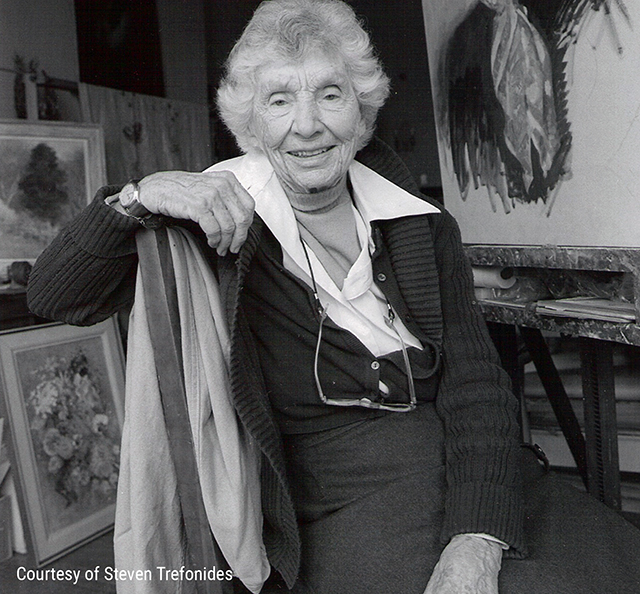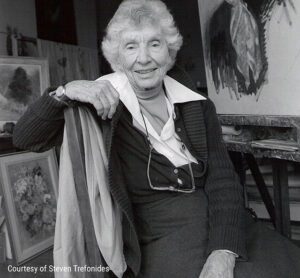
Poly Thayer
This exhibition was organized by the Archives of American Art in collaboration with Smithsonian Gardens. The labels were written by archivists, horticulturalists, artists, curators, educators and gardeners to articulate the many facets of flora and adds to the richness of interpretation found here.
The exhibition is in a small room by comparison to the rest of SAM’s (Smithsonian American Museum of Art) holdings. Unpretentious, humble, old and sometimes yellow, drawings hark back to the early 20th Century. Polly Thayer’s watercolor, “Flower Arrangement” captured my imagination with abstract color form and intensity. The artist developed glaucoma and as her vision deteriorated, she emphasized feeling in her work rather than seeing. Underneath the caption, archivist Rihoko Ueno, “a curator who worked closely with Thayer wrote, ‘They are not flower portraits or organic designs, but energies beckoning beyond themselves.”
Emilio Sanchez, an architectural painter, sketched a “Blue Sky” Petunia with colored pencil. This is a delightful although unfinished drawing; fresh and “naked” to the eye which shows the artist’s thinking.
Darka Vulic belongs to the network of mail artists, who create outside the confines of the art market and use the postal service as a method to exchange with other artists. In a small plastic packet are dandelion seeds sent to artist John Held, Jr. Vul

ic typed a letter for Dandelion “seeds of Peace”, a prayer for hope for those who stayed behind in Bosnia; he trusts seeds of the dandelion will travel and bring good luck to his brother and friend who are still in Sarajevo.
Drawings of Fairfield Porter, Louise Nevelson and Marisol lie next to artists who have persevered without acclaim or notoriety and the only brashness present was in the wall size flower painting which unfortunately shouted loudly in the midst of such quiet presence. Adaptation Nocturne by Ouizi, convincingly realistic, may be more appreciated in a hospital mural setting as the bucolic mood was out of tune with the rest of the show.
Annie Markovich
Volume 34 no.2 November/December 2019 p 30

